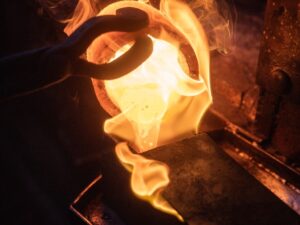Battery metals: Customers want Black Rock to crack on with Mahenge

Pic: Getty
Customers and potential financiers are demanding more product and an accelerated development schedule from the Mahenge graphite project in Tanzania, Black Rock Mining (ASX:BKT) says.
Black Rock updated the October 2018 Definitive Feasibility Study (DFS) to include a fourth production module – which will boost annual production from 250,000 tonnes to 340,000 tonnes — and a “compressed” development schedule.
- Scroll down for more ASX battery metals news>>>
This could make Mahenge one of the world’s largest potential graphite producers.
Miners undertake up to four different types of studies to determine whether or not a resource can be mined economically.
These are – in order of importance — scoping, preliminary feasibility (PFS), definitive feasibility (DFS) and bankable feasibility (BFS).
The enhanced DFS was completed in response to product demand and feedback from customers and financial markets “for a more aggressive production schedule and de-risked commissioning plan”.
- Subscribe to our daily newsletter
- Join our small cap Facebook group
- Follow us on Facebook or Twitter
Project numbers also look a lot better, for the most part.
Net present value (NPV) improves 30 per cent from $US895M to $US1.16Bn, and internal rate of return (IRR) from 42.8 per cent to 44.8 per cent.
NPV and IRR are metrics used to assess the profitability of a project. The higher they are above 0, the more profitable a project will be.
However, long run all-in sustaining costs (AISC) of production have increased from US$473 to US$494/t and forecast initial capex of $US116m for Stage 1 is marginally higher than the original DFS.
AISC is a good measure to appraise the profitability of a project because it includes everything, from mining, refining and transport, through to administration and exploration.
Stable state earnings after year five will be $US306m per year, the company says.

Black Rock’s John de Vries says the updated DFS was “a customer and financial markets driven outcome”.
“What started off as an enhancement study in response to market demand from our customers, ultimately ended up as a conversation with our financiers about a de-risked start-up and commissioning plan,” de Vries says.
“Being able to add capacity incrementally [using modules] ensures we do not over capitalise the asset with excessive redundant capacity but can respond to changes in market demand.
“This approach ensures the asset is not developed unless market demand is present.”
In other battery metals news today:
Plant test work confirms the suitability of an environmentally friendly and cost-effective processing flowsheet at Infinity Lithium’s (ASX:INF) San José lithium hydroxide project in Spain. Infinity plans to use a sulphate roasting and water leach process, which removes the need to use large volumes of sulphuric acid. This enhances the project’s environmental credentials compared to its hard rock peers, Infinity says.
A lot of sulphate is required for the process, but Infinity expects to recycle between 90-100 per cent – which means minimal sulphate ‘top up’ through the production cycle.
Lithium play Lepidico (ASX:LPD) has nixed a farm-in deal with Venus Metals’ (ASX:VMC) over an exploration tenement in the Youanmi region of WA. Lepidico discovered two lithium prospects at Youanmi within 12 months of drilling, but it has decided to focus on recent acquisition Desert Lion Energy and its Karibib lithium project in Namibia.
Venus says it will continue lithium exploration at prospective target areas within the tenement.
UNLOCK INSIGHTS
Discover the untold stories of emerging ASX stocks.
Daily news and expert analysis, it's free to subscribe.
By proceeding, you confirm you understand that we handle personal information in accordance with our Privacy Policy.








